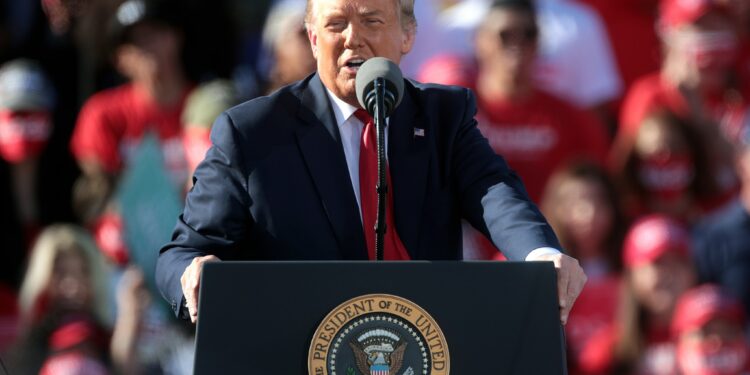
Since returning to the White House, former President Donald Trump has turned traditional communication with the public on its head. Gone are the days of large campaign rallies and lengthy speeches; now, Trump prefers the intimate, powerful setting of the Oval Office to speak directly to Americans. This shift has become a cornerstone of his second term, using the prestige of the Oval Office to project his authority and deliver his messages in an unfiltered, unscripted manner.
Instead of relying on press briefings or scripted speeches, Trump has chosen to engage with the media through almost daily appearances from behind the Resolute Desk. With the iconic portraits of past presidents like Ronald Reagan and George Washington as a backdrop, Trump has tackled a range of topics—from the ongoing conflicts in Ukraine and Gaza to environmental issues like the debate over paper straws. His frequent interactions with reporters have been carefully orchestrated, demonstrating his belief that the president should be his own best spokesperson.
White House press secretary Karoline Leavitt has reinforced this strategy, stating that Trump himself will lead the charge on communicating with the public. These Oval Office sessions have become a direct line to the American people, where Trump can present his views on his terms, without the filter of traditional media narratives. The president is not confined to formal speeches or limited Q&A sessions; instead, he relishes the opportunity to engage with the press in real time, offering off-the-cuff remarks that keep the media on its toes.
This direct approach stands in stark contrast to the style of his predecessor, Joe Biden, who rarely held press conferences and often relied on teleprompter speeches. Trump’s frequency of Oval Office interactions far exceeds Biden’s, with Trump holding 34 sessions with reporters, 16 of them in the Oval, compared to Biden’s 22 press encounters at a similar point in his presidency.
Trump’s use of the Oval Office as a platform is unprecedented. For him, these appearances are not just about policy—though they certainly cover everything from international diplomacy to domestic issues—they are about maintaining control of the narrative. By making the office accessible to the press, Trump ensures that his voice dominates the conversation.
In an era where media access is increasingly restricted, Trump’s willingness to open the doors of the Oval Office provides a stark contrast to the closed-off nature of previous administrations. However, this open access comes with caveats, as Trump has been known to restrict certain outlets from attending based on editorial decisions. For instance, when the Associated Press continued using the term “Gulf of Mexico” after Trump ordered the name change to “Gulf of America,” he barred the agency from attending one of his Oval Office sessions.
This style reflects Trump’s background in reality television, where controlling the narrative and creating suspense were essential to success. Like a showman, Trump often keeps the press guessing, teasing upcoming announcements or giving hints about his next moves. Whether discussing potential diplomatic deals with foreign leaders or hinting at major policy changes, Trump’s Oval Office sessions serve as a live broadcast that is part policy, part spectacle.
For Trump, the Oval Office isn’t just a place of authority; it’s a stage where he can continue to shape the political conversation in his favor, ensuring that he remains the focal point of attention in a rapidly changing political landscape. Whether it’s a surprise announcement or a bold statement, these live appearances serve as a reminder of his command over the narrative.
